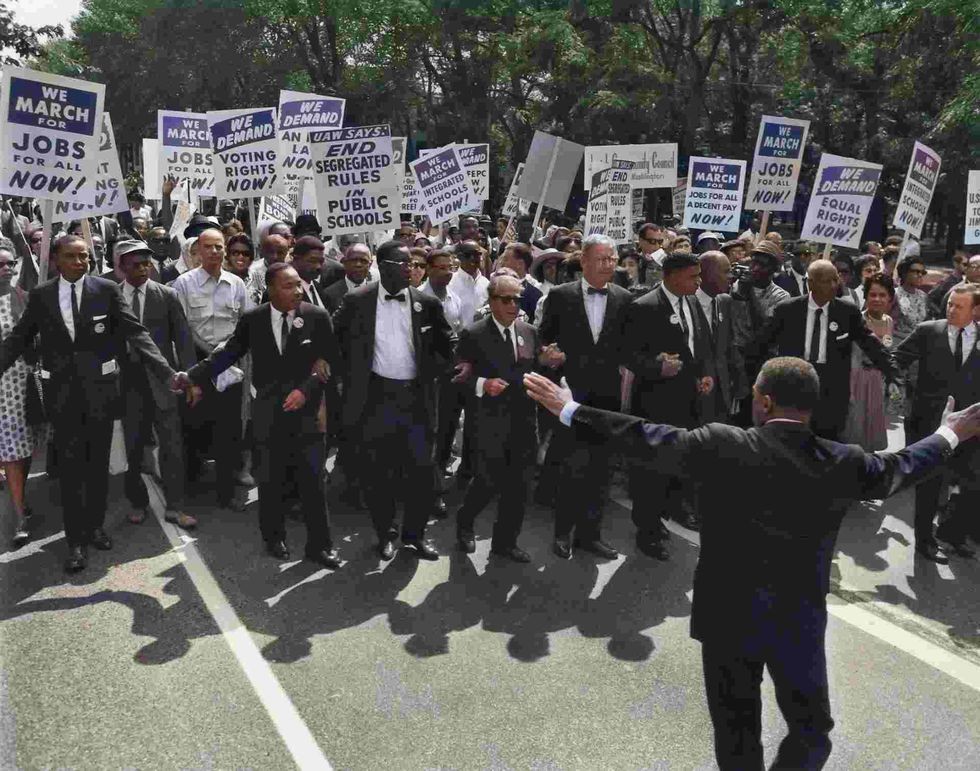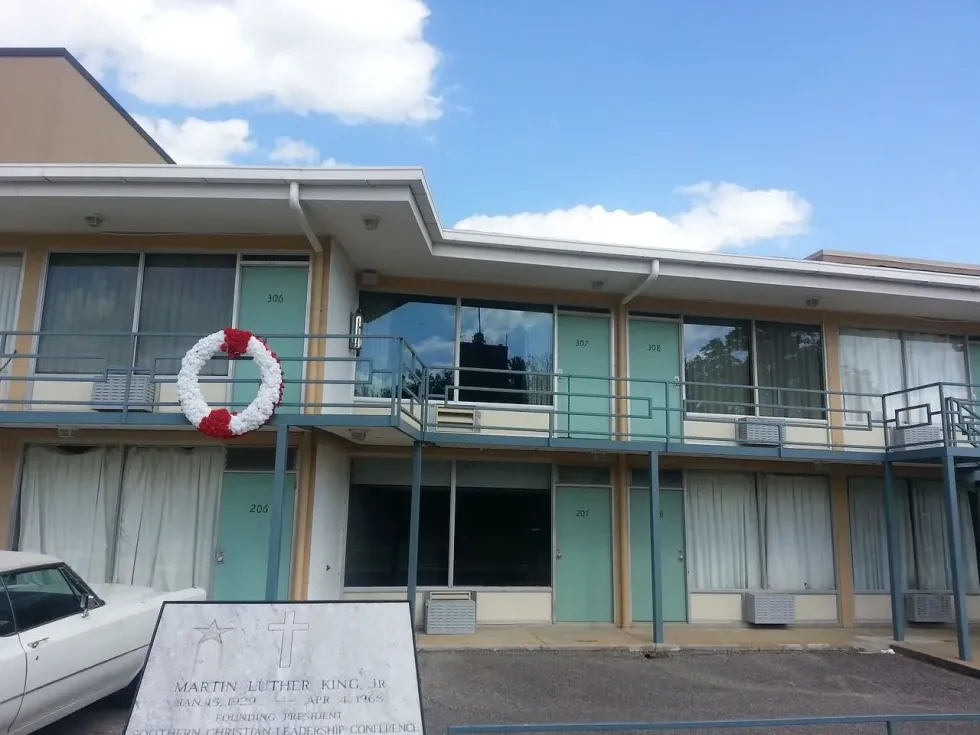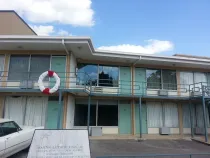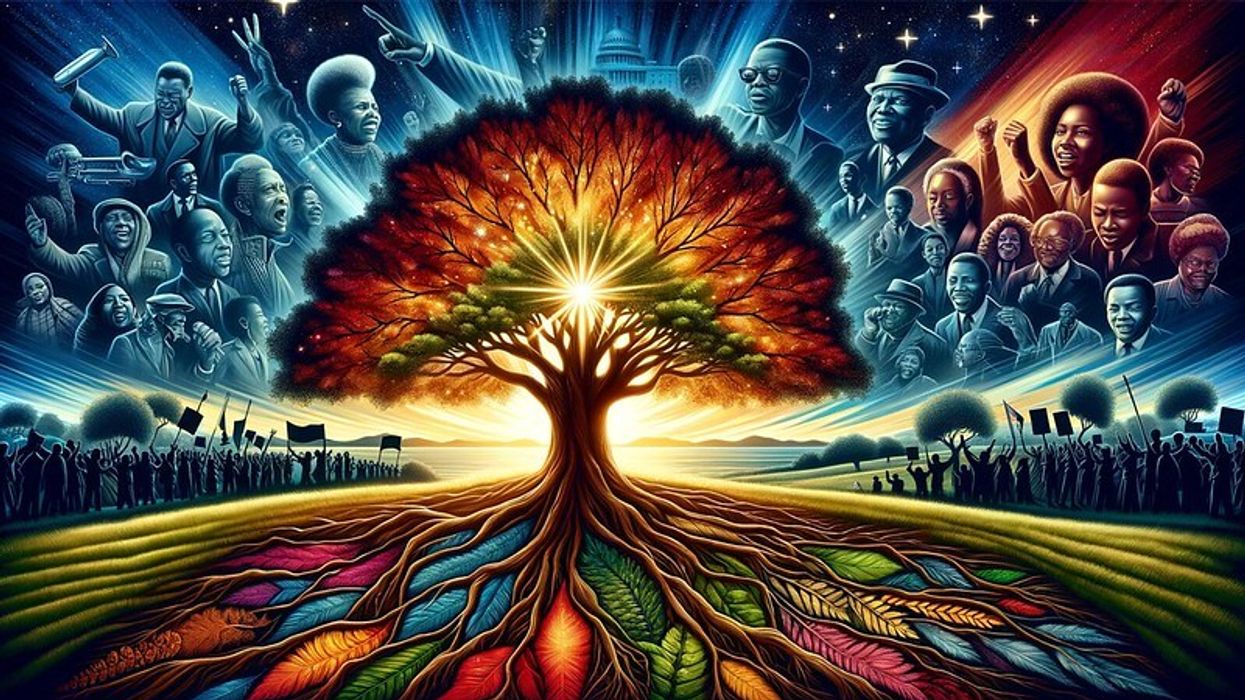Facts About The Civil Rights Movement For Kids To Learn

In history, there were many protests fought for rights to equality.
Have you ever thought about the fundamental laws implemented to make a living in society possible? Rights were acquainted with keeping up with a community that prospered mentally, lived in concordance, and depended on self-awareness.
The fundamental rights are the rights that each citizen follows under government laws. In the states of America, the rights of every individual resident are secured by the American Constitution. The rights for each individual implies that they should not be discriminated against on the ground of skin color, gender, nationality, religion, age, or disability.
If you enjoyed reading our article, you could also read about ancient Black history facts and Lyndon B Johnson Civil Rights Act.
History
Civil rights refer to the right to privacy, religion, a fair trial, free speech, assembly, and freedom of thought. From the Latin term ius civis, the term civil rights were taken, which meant the rights of a citizen.
Anyone who is a citizen of a nation should have the right to enjoy all rights equally.
Civil rights was a period committed to activism for equal rights for the fair treatment of African Americans in the United States. Individuals revived legal, social, political, and cultural changes during this period to restrict separation and end segregation.
Here is a summary of the Civil Rights Movement. The Civil Rights Movement was a battle to acquire equal rights for all Black people in America and other minorities who suffered and confronted slavery, racism, and different kinds of concealment because of white Americans.
In the 20th century, a few Black people joined with some white Americans in the United States of America in what is known as the Civil Rights Movement.
White buyers moved many African people to the United States of America to perform laborious work activities on the manors. Even though the principal architects talked about correspondence and freedom, they didn't provide similar civil rights for other races present in America. They were not paid and were treated inhumanely.
The oppression of Black people was aggregate and portrayed as chattel slavery, which meant that even offspring with enslaved parents were treated as enslaved as well. White plantation proprietors procured the benefits of the Black people's work and treated them inhumanely.
Black American people had no freedom and were not even paid for their hard work. African Americans attempted to get away and fight for their freedom; however, white Americans defeated them with their military power and weapons.
President Lincoln took the lead of the Union forces and crushed the Confederates in one of the most costly and lethal conflicts that prompted the freedom of enslaved Black African people. Southerners accepted that bondage was moral, and the northerners fought against it.
The great Civil War in America was fought between the Northern and Southern states of America. The Civil War in America took place from 1861 to 1865.
The principal reason for this Civil War was the issue of slavery. Before the Civil War, African Americans were enslaved and were deprived of civil rights.
It is known as the Civil War because the individual states had no power to break away from the government. The Civil War continued for four long years. During the Civil War, President Lincoln tried to free the African Americans from slavery.
In between the '50s and '60s, Black Americans concluded that they had experienced enough inhumane treatment and developed the movement known as the Civil Rights Movement. Nonetheless, southerners didn't surrender their control over Black people and kept stifling their freedom and privileges in illegal and frequently vicious ways.
The development depended on civil disobedience and peacefulness standards and to end racism in America.
Let's check out the history of the Civil Rights Movement. More than four million African people were shipped to America in awful conditions by slave traders for slavery.
A few atrocities were caused against them if they did not work. They were beaten brutally and even killed if they did not respond to their masters.
They were offered to white individuals who purchased them to work on their intensive crop fields, for example, sugarcane, cotton, and tobacco. They received no human rights, and their slavery was defended by white individuals who acted like they were gods.
A couple of white Americans had a problem with the establishment of slavery but remained silent because of intimidation of the southern Americans. The Southern states relied upon the enslaved totally as their economy was fundamentally founded on farming.
Black people were the sole workers, but the white people received all the benefits. They were even constrained and controlled to fight wars in the interest of the white men with almost no pay.
Only white people had voting rights, and they could become the citizens of America. Nonetheless, during the 1860s, the assessment of Americans, particularly the ones from the Northern states, moved profoundly against the establishment of slavery.
Assuming that they surrendered their enslaved, they would not have toiled on the farmlands and henceforth would earn no profits. So they utilized all strategies that they could find to proceed with the concealment of the African Americans.
The peaceful protests, the sit-ins, and the civil disobedience movement led to the Civil Rights Act in 1964 and the voting rights act in 1965. The Civil Rights Act forbids racial discrimination.
Social Activists
Racial segregation implied separating individuals on account of their races. Segregation laws have been practiced in many nations worldwide for a long time.
For instance, till 1964, it was lawful to isolate white and African Americans in certain states. In South Africa, from the '40s to the '90s, a framework called apartheid kept white and Black South Africans separate. Throughout history, you can see that many nations have applied racial segregation laws.
Many Southern states treated Black African-Americans as second-class citizens. Jim Crow laws made specific racial discrimination laws that kept black Americans separate from white people. Under Jim Crow laws, separate schools, restrooms, restaurants, and public transportation depended on an individual's skin color.
In the '30s, individuals from the National Association for the Advancement of Colored People searched for methodologies to desegregate schools through claims focusing on the legitimate teaching of separate but equal rights. It was the 1954 Brown v. Board of Education during which the U.S. Supreme Court ruled that the state laws of separate schools were unlawful.
School segregation had a significant effect on students. Schools serving Black kids received less financing than schools serving white students because of school segregation laws. They confronted stuffing, low supplies, and inadequate pay to the teachers. Variations led to gaps in the educational system available to Black and white students.
In 1950, only one student graduated from high school out of 10 Black students. Whereas, out of 10 white students, four graduated. Particularly hard hit were individuals living in states with a background marked by Jim Crow laws; Black students in Georgia, Mississippi, and other Southern states were allowed only a few years of schooling. Segregation ended in 1964.
In 1964, the Civil Rights Act declared that it ended all local and state laws related to segregation.
Many social activists played an important role in the civil rights movement. The primary motive of the civil rights movement was to give everyone equal human rights paying little heed to skin color, religion, nationality, disability, gender, or age.
The point of the civil rights movement which crested during the '60s was to guarantee that the privileges are equivalent and are secured by the law. Below is a list of the civil rights activists who took part in the Civil Rights Movement and brought change.
The most promising face of the Civil Rights Movement was Martin Luther King Jr., who used techniques for common insubordination to propel his causes. Martin Luther King led the famous speech 'I Have a Dream,' one of the most remarkable and moving public speaking of all time.
Thousands gathered to support civil rights and hear his speech. Expressive, however, firm, MLK's robust oratorial quality made him one of the leading civil rights machines.
Nelson Mandela was one of the prominent civil rights activists to protest peacefully. He served 27 years of his life in jail; however, that didn't prevent Mandela from becoming one of the most renowned civil rights and peace activists in history.
He was focused on ending the South African apartheid and has filled in as an image of hope for the people of South Africa and the world.
Rosa Parks was one civil rights activists who came forward to support civil rights. It appeared to be a simple activity by declining to surrender one's seat on the bus.
In any case, what Rosa Parks was doing was undeniably more determined and significant, a demonstration of quiet defiance that filled in as an iconic example to support the civil rights of the Black people.
Rosa Parks served in various authoritative limits later in her life. However, Rosa Parks will best be known for that small but mighty act of saying no.
While Martin Luther King Jr. lectured a strategy for nonviolent protests, Malcolm X was undeniably more extreme and violent in his techniques. Malcolm X was a weighty supporter of Black power and was favorable to racial separation, and Malcolm X was one of the most exemplary and estranging leaders.
The most influential Civil Rights Movement was on school grounds, and one of the most renowned student leaders was Stokeley Carmichael. He rose to the position of the SNCC, also known as the Student Nonviolent Coordinating Committee.
Stokeley Carmichael was a strong leader of the Black Panther party, bringing racial equality with the famous phrase 'Black power' to public acknowledgment.
Cesar Chavez was one of the most designated leaders in the Hispanic community, who used his peaceful strategies while upholding the rights of the laborers and stopping racial discrimination. Cesar Chavez used his PR and public speaking abilities to bring the issue of field laborer rights to cross country consideration.
Mahatma Gandhi was another great leader and famous for his nonviolent protest. Mahatma Gandhi's non-violence strategies were powerful in accomplishing independence for India from Britain. He led the famous peaceful march known as the Dandi March. Gandhi is renowned as the Father of the Nation of India. Gandhi's peaceful protests have filled in as a motivation to many worldwide.
Susan B. Anthony's supplication for woman's suffrage was reprimanded and as an assault on the foundation of marriage during her days. Yet, Anthony endured, becoming one of the leading female leaders in government while filling in as a significant part in letting women have voting rights.
Movements
For the kids, the Civil Rights Movement started in schools and colleges. In 1954, the Supreme Court declared that segregation in public schools was illegal.
Around nine black students famous as the Little Rock Nine chose to start classes in a school that followed the segregated laws.
So, when the nine black students ('Little Rock Nine' group) came for their first day at Central High School, they were halted and threatened by the Arkansas National Guard.
The 'Little Rock Nine' group didn't surrender and took a stab at going to class again, but they were threatened, and the 'Little Rock Nine' group failed to attend the classes.
President Dwight Eisenhower directed the federal troops to go with the Little Rock Nine to school; however, this didn't stop the tormenting and badgering. A few protests to desegregate all schools and necessary actions were needed across the states.
Despite the civil rights ensured during the recreation period, Black Americans did not have voting rights because of impractical literacy tests, morality, and heredity.
President Dwight Eisenhower marked the Civil Rights Act of 1957 to forestall separation based on literacy and conquer these literacy tests introduced by the Southern states. A commission was set up whose main aim was to investigate any injustice against the Civil Rights Act of Black Americans. In several parts of Southern states, the government launched many federal troops.
Kids contributed a lot to the Civil Rights Movement. One such civil rights movement was the sit-ins and nonviolent protests.
On February 1, 1960, an incident took place in the Woolworth's lunch counter, Greensboro in North Carolina. They would not serve food to four Black college students, and the students wouldn't leave the food counter until they served them food. It prompted the Greensboro sit-ins movement, where hundreds of protestors joined the four Black students.
The students boycotted lunch counters that followed segregation until Woolworth's lunch counter gave the four Black students food. This occasion propelled a few other protests driven by the Student Nonviolent Coordinating Committee. This was the start of the civil rights movement by the students.
There were many Civil Rights Movements. One of the famous Civil Rights Movements was the Montgomery Bus Boycott. Civil Rights Movement pioneers focused on Montgomery in Alabama because the segregation there was so outrageous.
On December 1. 1955, Black leader Rosa Parks demonstrated a protest on the Montgomery Bus system. Rosa Parks would not surrender her seat on a public bus to a white passenger.
Rosa Parks was an important figure in the civil rights activities and a member of the NAACP to fight for the rights of Black people. Parks just got back from training on the nonviolent civil disobedience movement, and Rosa Parks was arrested for starting the Montgomery Bus Boycott.
African Americans coordinated the Montgomery Bus Boycott. African Americans concluded that they would not ride on the bus again until treated like white people.
Under segregation, a Black passenger couldn't sit in front of a white passenger; they needed to sit toward the bus's rear end. Also, if a white passenger wants a Black passenger to give their seat, the black passenger has to.
In 1960, the Supreme Court in Boynton v. Virginia announced that it was illicit to segregate individuals on public transportation moving between different states. In 1961, student activists chose to test whether the Southern states would accept this decision.
Many Black Americans and white activists decided to ride buses through the Southern states, sitting together instead of isolating themselves. These rides came to be known as the 'Freedom Rides.'
The 'Freedom Riders' decided to enjoy these bus rides in many places to stage protests. But during such protests, some 'Freedom Riders' were beaten and arrested.

Facts About Civil Rights Movement For Kids
During every Civil Rights Movement, people have driven the battle for their freedom just as those of others. These pioneers have placed their lives in peril by supporting what they accept as proper and lawful.
The Civil Rights Movement was a protest to get social justice. Here is a list of the important Civil Rights Movement facts at a glance.
In 1954, the Supreme Court decided that schools should not be separated for Black and white kids, and all kids merited an equal chance for a quality school education.
In 1955, Rosa Parks declined to surrender her seat on a bus to a white passenger, and as a result, she was arrested. Other Black Americans wouldn't ride the bus, boycotting them, and protesting Park's arrest. In 1956, the Supreme Court declared that segregated buses were unlawful and that all citizens have equal civil rights.
In 1960, some Black college students would not leave the lunch counter despite being denied to be served. Other Black college students started doing the same. This Civil Rights Movement by the youth is known as the sit-ins movement. As a result, many eateries and lunch counters changed their policy.
Martin Luther King led peaceful protest marches to protest in Birmingham in Alabama. The police there assaulted the protesters with firehoses and dogs.
Many protesters were taken to prison during the Civil Rights Movement, and the hotel where Martin Luther King Jr. stayed and his brother's home was bombarded. President John F. Kennedy sent troops into the city to maintain peace. Many city leaders consented to give Blacks more privileges and citizenship rights.
The injustice filled the Civil Rights Act of 1964 with unrest. In 1965, the Montgomery marches and protests took place.
In Memphis, Tennessee, Martin Luther King Jr. was assassinated on April 4, 1968, by James Earl Ray.
In 1960, many protest marches took place throughout the Southern United States. By 1963, around 14,000 protesters were arrested.
On June 11, 1963, President John F. Kennedy introduced a bill that declared racial discrimination was illegal based on race. President Johnson signed the bill when he came in place of Kennedy, and he pushed the bill through Congress.
President Johnson signed the voting rights act in 1965. The voting rights act stated that nobody could be denied the right to vote based on racial discrimination. The voting rights act also outlawed poll taxes and literacy tests, and poll taxes meant that you had to pay to cast a vote.
Here at Kidadl, we have carefully created lots of interesting family-friendly facts for everyone to enjoy! If you liked our suggestions for the civil rights movement for kids that you need to know, then why not take a look at facts about women's rights, or Aboriginal voting rights facts.
We Want Your Photos!
More for You
Bachelor of Science specializing in Botany, Master of Science specializing in Clinical Research and Regulatory Affairs

Sridevi ToletyBachelor of Science specializing in Botany, Master of Science specializing in Clinical Research and Regulatory Affairs
With a Master's degree in clinical research from Manipal University and a PG Diploma in journalism from Bharatiya Vidya Bhavan, Sridevi has cultivated her passion for writing across various domains. She has authored a wide range of articles, blogs, travelogues, creative content, and short stories that have been published in leading magazines, newspapers, and websites. Sridevi is fluent in four languages and enjoys spending her spare time with loved ones. Her hobbies include reading, traveling, cooking, painting, and listening to music.
Bachelor of Commerce

Niyati ParabBachelor of Commerce
With a background in digital marketing, Niyati brings her expertise to ensure accuracy and authenticity in every piece of content. She has previously written articles for MuseumFacts, a history web magazine, while also handling its digital marketing. In addition to her marketing skills, Niyati is fluent in six languages and has a Commerce degree from Savitribai Phule Pune University. She has also been recognized for her public speaking abilities, holding the position of Vice President of Education at the Toastmasters Club of Pune, where she won several awards and represented the club in writing and speech contests at the area level.
Disclaimer
1) Kidadl is independent and to make our service free to you the reader we are supported by advertising. We hope you love our recommendations for products and services! What we suggest is selected independently by the Kidadl team. If you purchase using the Buy Now button we may earn a small commission. This does not influence our choices. Prices are correct and items are available at the time the article was published but we cannot guarantee that on the time of reading. Please note that Kidadl is a participant in the Amazon Services LLC Associates Program, an affiliate advertising program designed to provide a means for sites to earn advertising fees by advertising and linking to Amazon. We also link to other websites, but are not responsible for their content.
2) At Kidadl, we strive to recommend the very best activities and events. We will always aim to give you accurate information at the date of publication - however, information does change, so it’s important you do your own research, double-check and make the decision that is right for your family. We recognise that not all activities and ideas are appropriate for all children and families or in all circumstances. Our recommended activities are based on age but these are a guide. We recommend that these ideas are used as inspiration, that ideas are undertaken with appropriate adult supervision, and that each adult uses their own discretion and knowledge of their children to consider the safety and suitability. Kidadl cannot accept liability for the execution of these ideas, and parental supervision is advised at all times, as safety is paramount. Anyone using the information provided by Kidadl does so at their own risk and we can not accept liability if things go wrong.
3) Because we are an educational resource, we have quotes and facts about a range of historical and modern figures. We do not endorse the actions of or rhetoric of all the people included in these collections, but we think they are important for growing minds to learn about under the guidance of parents or guardians.







